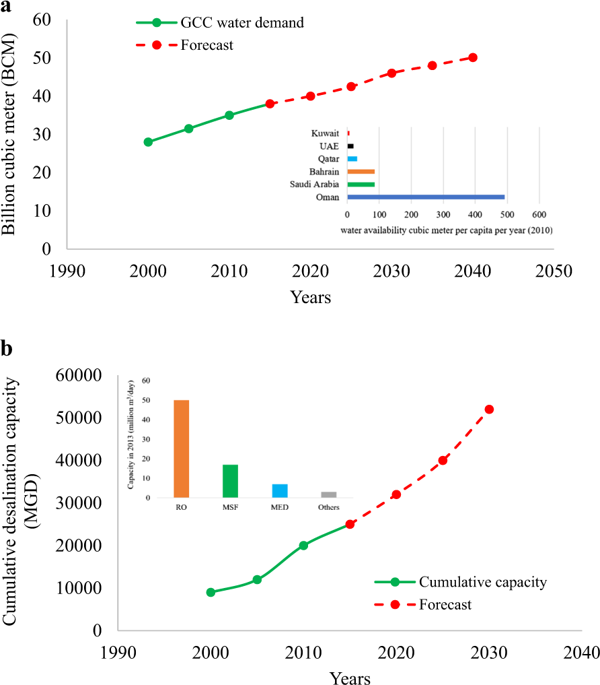npj Clean Water ( IF 10.4 ) Pub Date : 2019-01-07 , DOI: 10.1038/s41545-018-0028-4 Muhammad Wakil Shahzad , Muhammad Burhan , Kim Choom Ng

|
Considering different grades of energy as equivalent in the desalination industry could have negative economic and environmental consequences. Whereas this approach will suffice for the comparison of same energy input processes, omitting the grade of energy when comparing diverse technologies may lead to incorrect conclusions and, resultantly, inefficient installations. Here, a standard primary energy-based thermodynamic framework is presented that addresses the energy efficacy of assorted desalination processes. Example calculations show that a thermal desalination plant integrated with a power plant consumes 2–3% of input standard primary energy. We also propose a standard universal performance ratio methodology to provide a level playing field for the comparison of desalination processes; this suggest that the majority of desalination processes are operating far from the sustainable zone, with only ~10–13% at the ideal or thermodynamic limit. A proposed roadmap shows that attaining an efficacy level of up to 25–30% of the thermodynamic limit is crucial for achieving the 2030 sustainability development goals for seawater desalination, which will require a technological shift in the capability of dissolved salts separation processes.
中文翻译:

用于比较海水淡化过程的标准一次能源方法
将不同等级的能源视为海水淡化行业中的等效能源可能会对经济和环境造成负面影响。尽管此方法足以比较相同的能量输入过程,但是在比较各种技术时省略能量等级可能会导致错误的结论,从而导致安装效率低下。在这里,提出了一个基于标准主要能量的热力学框架,该框架解决了各种淡化过程的能源效率问题。计算示例显示,与电厂集成的热海水淡化厂消耗的输入标准一次能源为2%至3%。我们还提出了一种标准的通用性能比方法,以为海水淡化工艺的比较提供一个公平的竞争环境。这表明大多数脱盐工艺的运行都远离可持续发展区,只有约10–13%处于理想或热力学极限。拟议的路线图表明,达到高达20-30%的热力学极限的功效水平对于实现2030年海水淡化的可持续发展目标至关重要,这将需要技术上的溶解盐分离工艺能力转变。











































 京公网安备 11010802027423号
京公网安备 11010802027423号